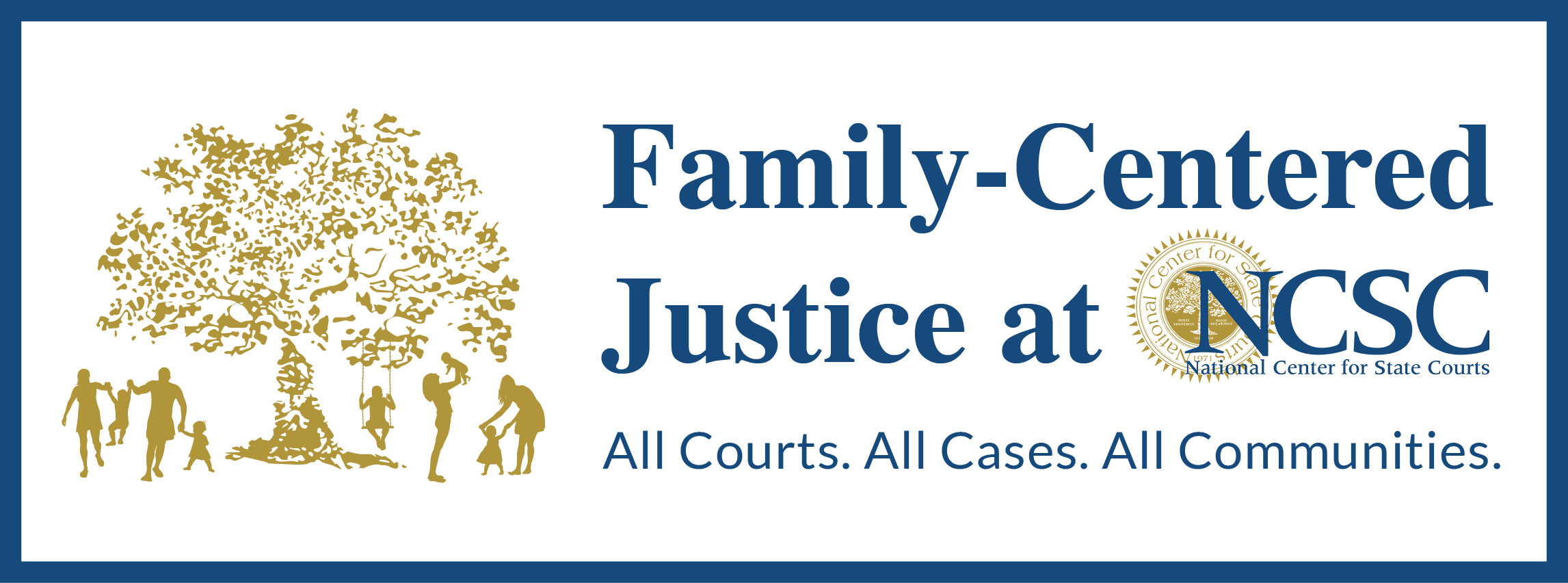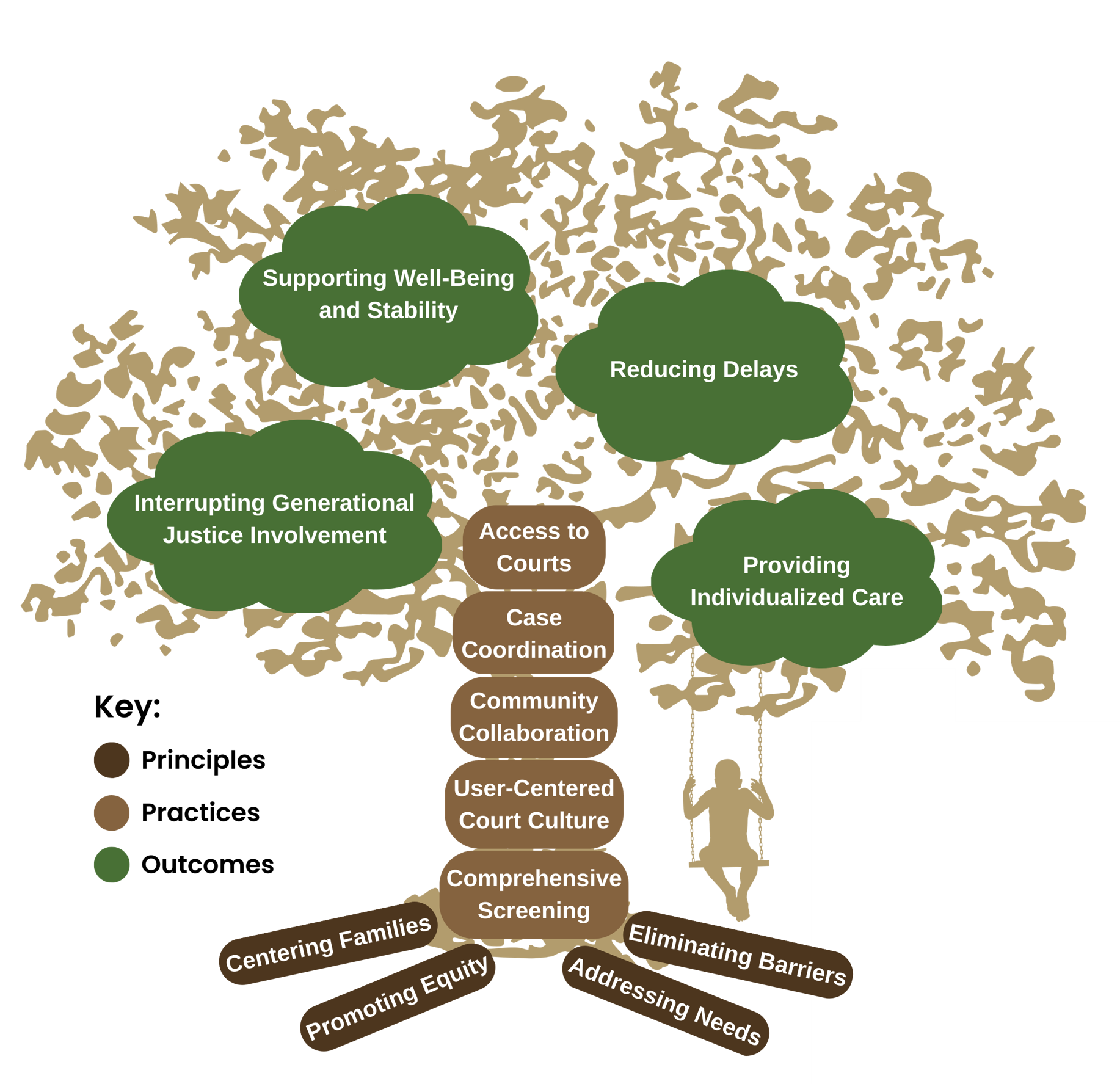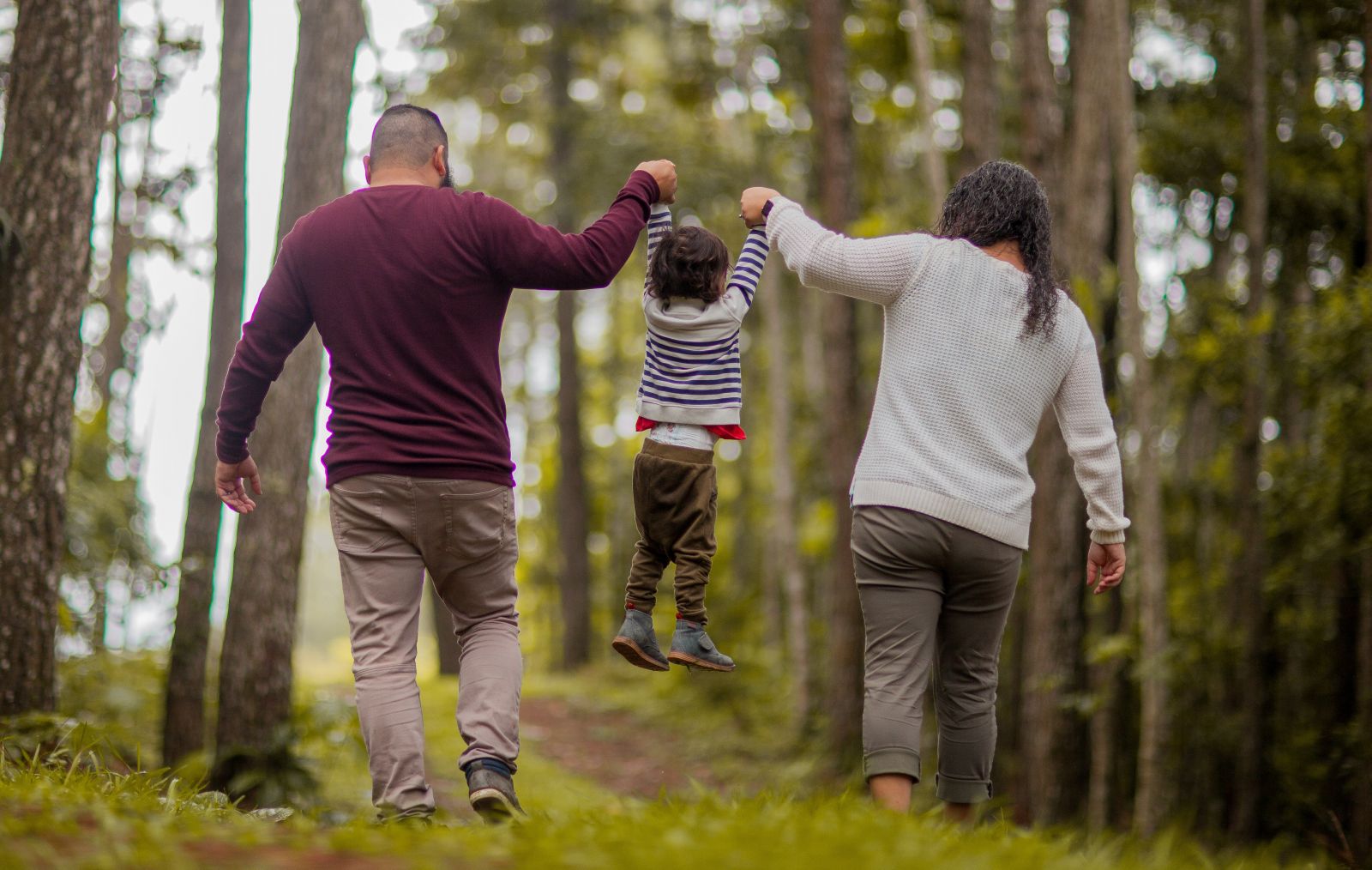
The purpose of Family-Centered Justice is to cultivate courts that center families and contribute to building strong communities where all families thrive.

Courts across the country recognize the need for family-centered justice. It is not uncommon that cases involving the same family originate in different courts (i.e., Juvenile, Family, Housing) and are managed as isolated events. This inhibits knowledge of the dynamics or potential strengths of the family system.
- Families experience multiple barriers to accessing community-based resources that support legal and basic needs. Court involvement can be avoided when families are provided with effective preventative services, including legal support, behavioral health support, and assistance with basic needs such as housing and food. Families involved in multiple court cases may be required to balance duplicative or conflicting court orders. This can overwhelm families or unnecessarily extend their justice involvement and strain limited treatment resources.
- Court data does not show the family as a whole. Court case management systems rarely show all cases involving family members. Staff can manually connect cases, but this practice is infrequently prioritized in the rush of addressing new filings. As a result, decision-makers may not know what orders already exist, what services have been provided, or what case coordination is needed. Courts need both operational and technical assistance to connect and manage cases involving family members.
- Traditional court processes may retraumatize families. Many families coming to the court have experienced substantial trauma. Exposure to trauma can cause long-term emotional, behavioral, and physical difficulties and impact the ability of an individual to understand and engage in court processes. Courts often do not know what practices are trauma-informed and may not have access to training on effective practices.
- Informed decisions. Courts can use structured screening tools to identify related cases and issues to facilitate case coordination. Courts can also screen early in the process to identify other legal needs, basic needs like food and housing insecurity, and behavioral health issues to refer families to services in the community.
- Adaptive case processing. Often court cases proceed through a similar case management process, regardless of the extent and complexity of related issues. There are examples of courts effectively managing cases by adapting case management trajectories so that court resources are administered to cases based on specific aspects of a case rather than a standardized approach. This ensures that court processes are better tailored to the specific needs of each family and assists in targeting referrals to support services.
- Navigation support. There is a growing body of research in support of peer partners in court systems. They can help families connect with community-based resources, both formal programming and informal supports. They can also advocate for individuals, help them to self-advocate, and explain court processes in an easily understandable way.
Many peer partners have valuable lived experience in the justice system and provide unique, person-centered, and strength-based support. - Cultivating trauma-informed culture. All court professionals, from judges to case managers, attorneys, and clerks, need to be knowledgeable about how trauma impacts individuals and families and the practices that can support trauma-informed and responsive courts. Training and education start the conversation and continued coaching, discussion, and assessment ensure that the practices are applied consistently.
- Community collaboration. Courts have a unique and vital role as community partners. They see families at their worst moments and know the assets and needs of the community. Often, however, court professionals have limited knowledge about all of the resources available in the community. Ongoing and intentional collaboration with community partners can clarify roles and responsibilities, identify shared goals, and build an effective array of services tailored to the needs of the community.
- Courts will address families’ needs effectively, limiting case delays or repeat litigation
- Parties will report more positive perceptions of procedural fairness
- Services will be available in the community to support basic, legal, and behavioral health needs
- Court communities will promote improved judicial and court employee wellness
- Courts will contribute to the well-being of families and family stability
- Generational justice involvement and trauma will be reduced
